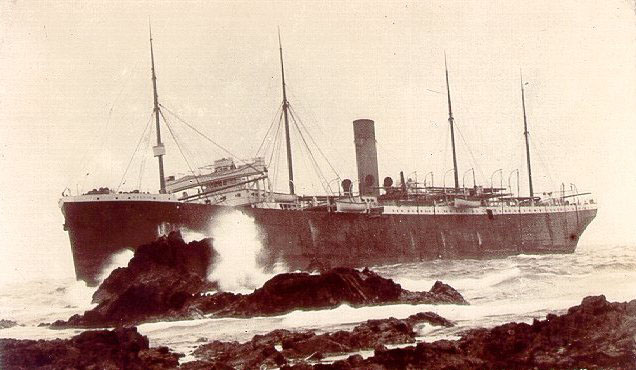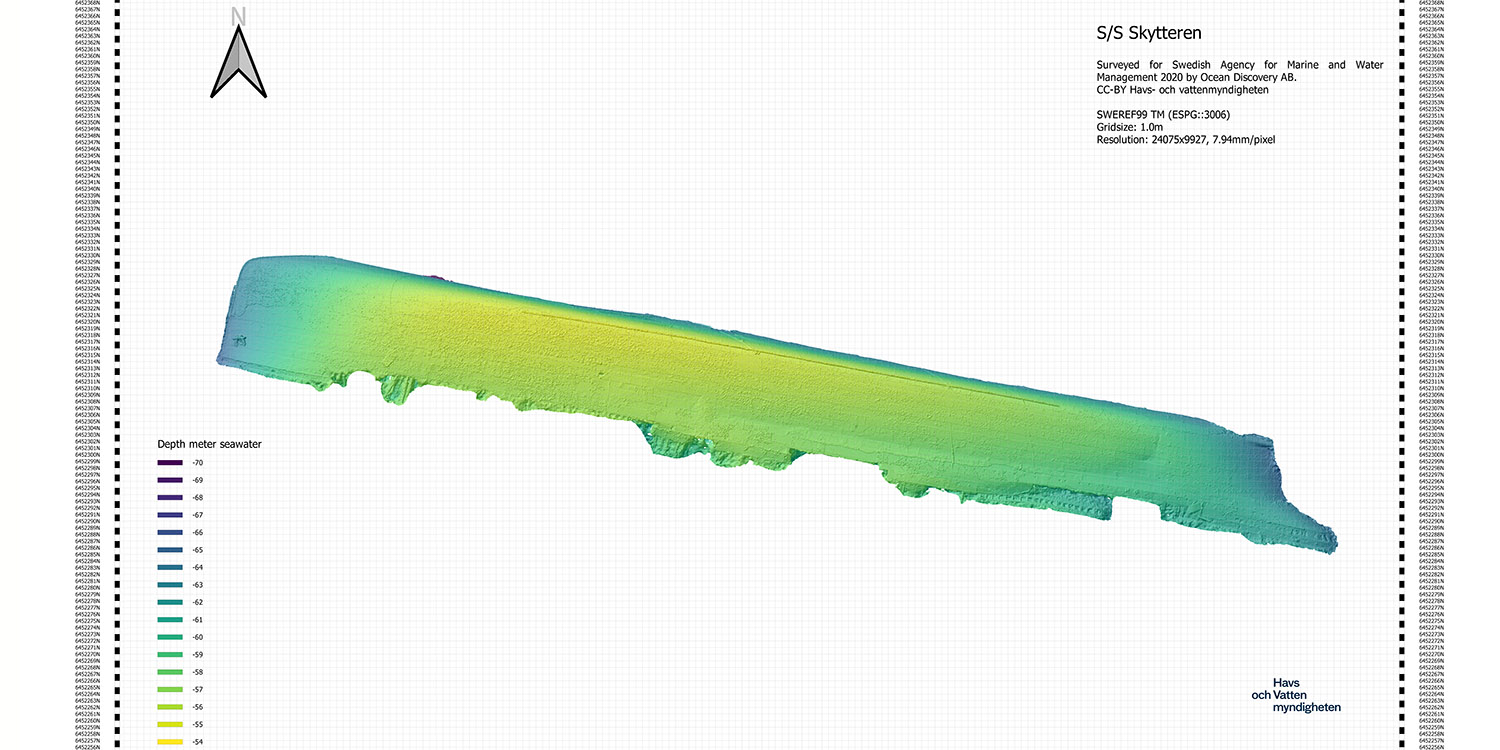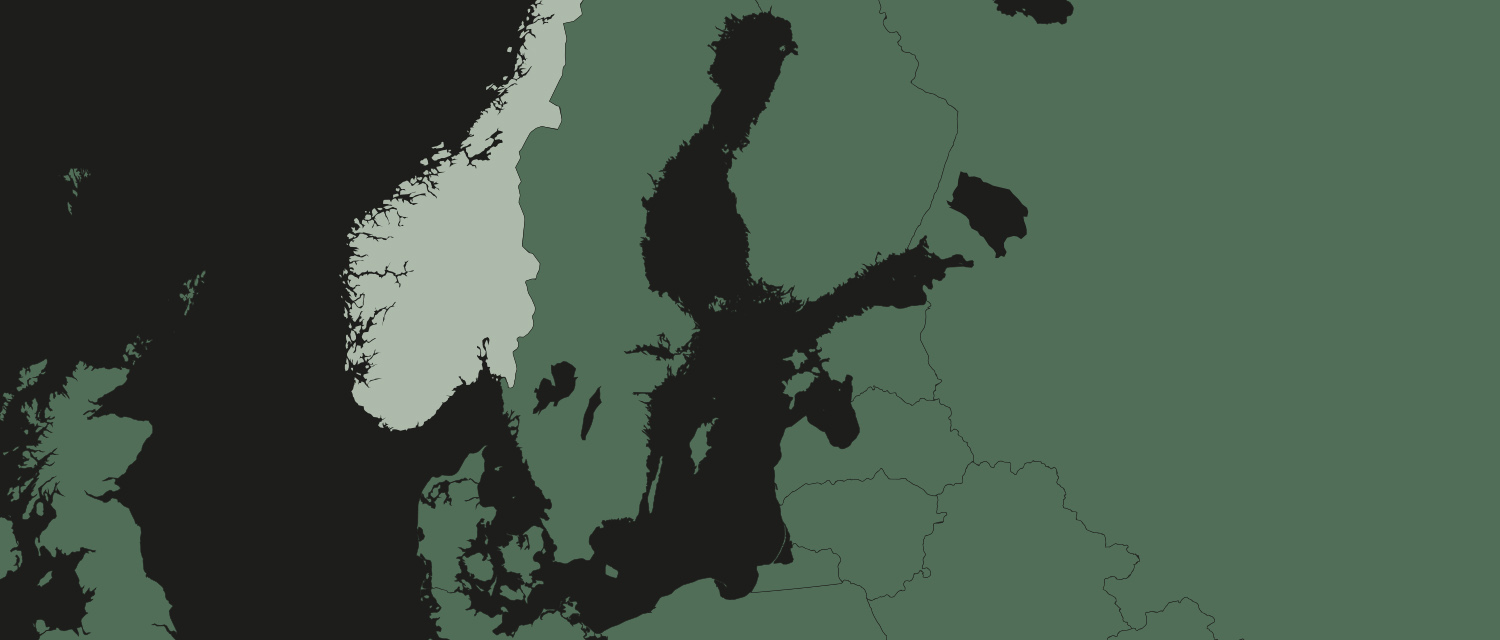When the Skytteren shipwreck began to leak oil, the question of environmentally hazardous wrecks emerged. The ship has an exciting history – first as a passenger ship that was split into two parts and became “the world’s longest ship”, and then as a whaling vessel that was sunk in 1942 off Gothenburg. In 2005, it started to leak oil.
Facts
Deep:
Build: 1900
Length: 172.2 meters
Width: 19.3 meters
Shipwreck: 1942
Ship type: Whaling vessel
When Germany attacked Norway on 9 April 1940, several Norwegian cargo ships lay at anchor in Swedish ports. Both the Norwegian government in exile and the German occupying power made claims on the ships. Since the problem of ownership could not be solved, the ships were forbidden to leave Swedish waters.
In early March 1942, ten Norwegian ships, including the whaler Skytteren, lay at anchor in the port of Gothenburg. The commanders’ plan was to sneak out of the harbour and make their way to England.
The escape got underway on 31 March 1942. But of the ten ships that departed Gothenburg, only two managed to reach England. Two others returned to Gothenburg, and the remaining six were sunk by German warships or by their own crew to avoid falling into German hands. Skytteren was sunk at a depth of nearly 75 metres, eleven kilometres west of Orust.
One of many environmentally hazardous wrecks
In the winter of 2005, large amounts of oil appeared in the waters just north of Måseskär on the Swedish west coast. The oil came from Skytteren, and at its peak the discharge totalled nearly 400 litres per day. The leakage from Skytteren became a wake-up call for a problem that had previously been overlooked.
In 2018, work had begun on ridding Skytteren of environmentally hazardous substances. Following extensive investigations in 2021 and 2022, 175,000 litres were salvaged by drilling holes in the hull and then pumping out the oil and oil–water mixture. The wreckage might still contain oil because Skytteren is lying on its side, making some of the fuel tanks inaccessible.
The ship’s early days – passengers and grounding
The ship was built as a large passenger ship that was named Suevic. It was launched in 1900 in Belfast, Northern Ireland, and was owned by the White Star Line, which a few years later would own the Titanic.
In 1907, Suevic became stranded at Lizzard Head in Cornwall. The crew and 500 passengers were evacuated. After the cargo was also removed, unsuccessful attempts were made to free the ship. The decision was then taken to cut the shipwreck in two. The broken bow was left in place while the 120-metre stern section was towed to Southampton.

Skytteren as Suevic, stranded by Cornwall. Photo in public domain.
A new one, 65 metres long, was built in Belfast. The ship then became known as the world’s longest ship, with its bow in Belfast and stern in Southampton. The bow was then towed to Southampton, where the two parts were joined together. Suevic then continued to operate for the White Star Line until 1928, when she was sold to Norway and converted into a whaler.




